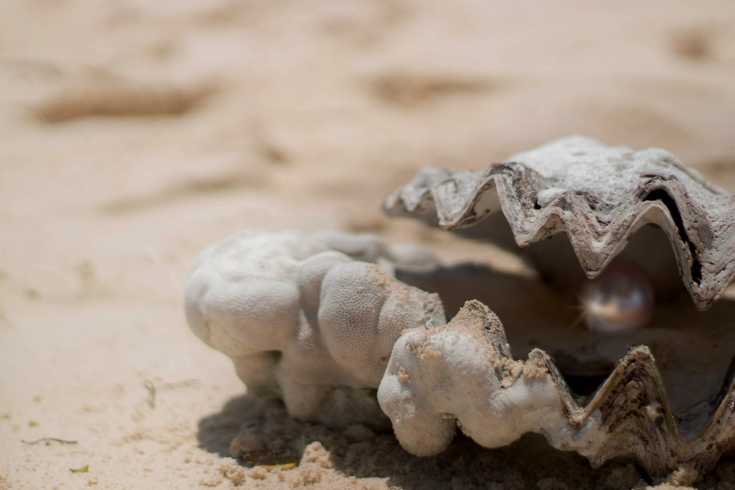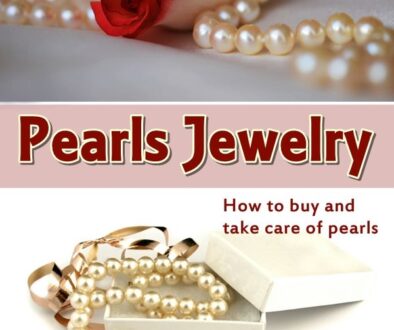Cultured Freshwater Pearls

As opposed to natural pearls that mature by natural means in oysters and are a rarity these days, cultured pearls also develop in oysters, however with a little bit of human assistance. A little tissue is inserted in the oysters and left in rivers, lakes, ponds or sea to develop naturally.
From time to time, the oysters are extracted from water to examine the pearls progress. Pearl plantations continuously keep track of the development and excellence of cultured pearls, but we don’t have any influence on pearls creation or its growing because this is an organic course of action and more so, due to the type of water and weather conditions, it is entirely left to nature.

Culturing of pearls has been in existence for a long time and existing in Europe, North America and Asia, however, it is considered to have come from China in the thirteenth century. The process has been brought over to Japan, the location where the famed Mikimoto jewelers presented cultured pearls as a fantastic jewelry piece. Freshwater pearls spring from this strong support rendering it extremely valued in most countries. Due to pearl culture advances, the process has become more economical to make this kind of pearls.
For freshwater pearls, 4 key qualities must be considered:
Level of smoothness: The smoother the surface, the more costly the gem. On the other hand, many pearl enthusiasts view protrusions and scars as contributing to a pearl’s characteristics. Many of the exciting jewelry designs offer this kind of pearls that are more economical compared to those which are blemish-free.
Luster: Together with the level of smoothness, luster is an essential element in freshwater pearl appraisal. High-quality freshwater pearls have a uniformly dispersed luster and a high distinction between light and dark areas.
Form: Many are not round. They will come in a nearly unlimited variety of shapes for the way the mantle tissue is cut. Many unusual natural shapes have been located, like the “angel-wing” pearls discovered solely in the Mississippi River. Typically, the rounder the pearl, the higher its price. The good news for pearl lovers is that cultivation techniques have developed so that beautiful, round, all-nacre pearls can be obtained everyday.
Color: The color variety is more extensive compared to saltwater pearls and contains white, pink, orange, yellow, rose, violet, gray and blue. The actual existence of pink and silver overtones on freshwater pearls will make them more precious.
Freshwater pearls vs. Saltwater pearls
It’s good to know that freshwater pearls usually are not as expensive as their saline water counterparts. Also, the freshwater pearls are available in some forms, dimensions, and colors covering anything from white to pink, green, gray, silver, lavender and every spectrum tone! Because they are not ‘beaded’ using a nucleus, these pearls are entirely produced of solid nacre. As a result, freshwater pearls are more robust, and more proofed against any deterioration and damage.
Biwa pearls

Freshwater pearl farming comes from Lake Biwa, the Japan’s largest and most ancient freshwater lake, in the early years of 1900. For more than fifty years, pearl jewelry from this lake had the rank of being the most beautiful worldwide.
Several studies and findings put together by Japanese researchers Tatsuhei Mise, Tokishi Nishikawa, and Kokichi Mikimoto around the beginning of 20th century resulted in a transformation in the pearl sector. There wasn’t any need finally to expect ‘accidental’ pearls to occur. You could do this faster!
A little foreign item was placed in the mollusk, which will then inevitably react the way it did naturally – by secreting nacre, the foundation of all pearls. The mussel is then put back into the water and assisted for 2-6 years up until the pearl is made.
Pearls rings and earrings

Pearls rings and earrings offer that particular shine any woman want in their precious jewelry. Basic pearl earrings or a pearl-studded ring can grant a woman an elegant look that can’t typically be accomplished with gold or silver. The essential purity of white or cream-colored pearl studs produces a feeling of youthful purity and beauty.
Pearl necklaces are thought to be the top notch in pearl jewelry with regards to beauty and elegance. Women that matter, from first ladies to around the world queens usually have the ideal pearl necklace to adorn their beautiful necks.
Cultured freshwater pearls can be found in many dimensions from 3mm to 9mm, but the most in-demand sizes are around 6-7mm and 7-8mm. Girls decide to opt for the lower size however it is a question of personal preference and elegance. Most women like putting on pearl jewelry and pearl gems created using cultured freshwater pearls are fantastic presents for the beloved. Pearls are probably the best mother nature’s gifts. Boost your elegance with the beautiful world of pearls.
Pearl necklaces
Freshwater pearls are currently employed for pearl necklaces. An important feature about them is their cost. High-quality cultured freshwater pearls are reasonably-priced and may, as a result, be utilized for long pearl strings popular with the younger groups. Then again, they also have been employed for traditional pearl chokers and different pendants. Pearl necklaces are lovely approaches to put on this classic item. They may be coupled with just about anything and can be utilized in all fashions and any circumstance.
They are also eye-catching when turned to bracelets. Basic single pearl strand or thick pearl strand can create any dress stand out.
Even though freshwater pearls usually are less expensive than saltwater, their level of quality is relatively equivalent. Their colors, luster, and uniqueness provide great assortment, elegance, and value. Strands of freshwater pearls could be put on alone, or coupled with others in changing shades to attain quite a unique result.
The lower price of freshwater pearls means that you can buy many strands and make a nearly limitless variety of looks.


